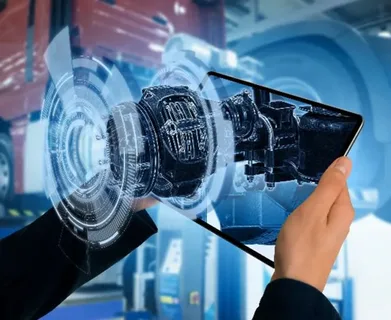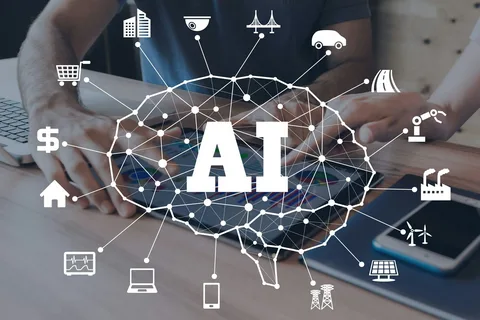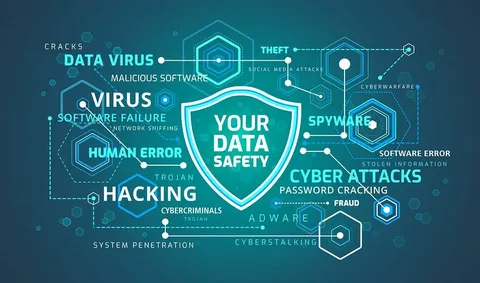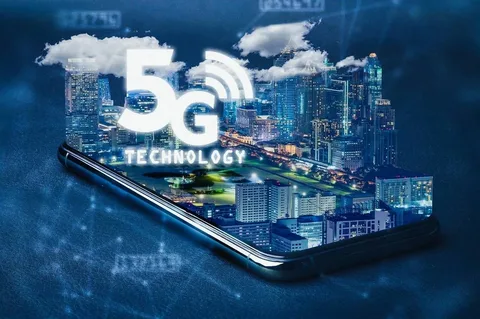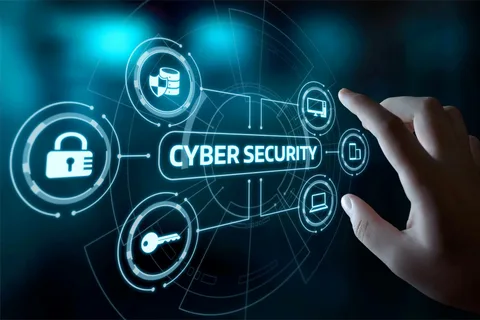New Dimension of Tech, Spatial computing is transforming the human interaction with computer systems by harmonizing the real and virtual realms. Through its integration of such aspects as AR, VR, AI, IoT, and computer vision, spatial computing allows computers to perceive and engage with space in the same way humans interact with it. From gaming to precision medicine, spatial computing is unlocking an expansive set of applications that are transforming industries and daily life.
What is Spatial Computing?
Broadly speaking, spatial computing describes the way that computers store and work with pointers to real spaces and objects. It entails representing the physical environment in digital space and using algorithms and sensors to monitor spatial connections so that the user can operate technology in an intuitive, space-aware manner.
.Technologies behind making spatial computing a reality include:
.Augmented Reality (AR)
.Virtual Reality (VR)
.Mixed Reality (MR)
.Computer vision
.AI and machine learning
.GPS and geolocation
.Depth sensors and LiDAR
Now let’s dive into the practical applications across different sectors.
1. Medical and Health Training
Surgical Support
Spatial computing is taking a revolutionary place in operating rooms. Surgeons are able to visualize patient anatomy in 3D while operating using AR glasses, projecting important information like blood vessels or tumors onto the patient’s body in real time. This results in greater precision and lowers the risk of complications.
Medical Training and Simulation
Medical professionals and students utilize VR environments to recreate surgeries, thereby enabling them to practice intricate operations in a virtual risk-free environment. The simulations provide a ‘hands-on’ experience without exposure to actual patients, speeding up the acquisition of skills.
Physical Therapy
Spatial computing devices can track patient movement and posture throughout rehabilitation. AI algorithms evaluate motion and offer real-time feedback, enhancing therapy and personalization.
2. Learning and Education
Spatial computing makes learning more real by providing an immersive learning experience:

Virtual field trips: Students are able to visit historical landmarks, oceanic biomes, or even space in virtual reality.
Interactive learning spaces: Physics or chemistry principles are able to be rendered in 3D, allowing students to grasp abstract concepts through real-world simulations.
Special education: Spatial technologies are able to accommodate students with learning disabilities by providing customized learning spaces.
3. Architecture, Engineering, and Construction (AEC)
Design Visualization
Architects use AR/VR tools to walk clients through digital models of buildings before they’re built. These virtual walkthroughs allow clients to experience scale, lighting, and materials realistically, reducing design errors.
Remote Collaboration
Engineers and architects from other locations can also work together in real time from shared virtual models. This promotes collaboration, lowers travel expenses, and accelerates the design process.
Site Monitoring and Safety
Drones and spatial computing equipment can track construction sites for safety risks and make sure that projects are moving along as they should. Workers can even be trained in a virtual setting to prepare them for dangerous conditions.
4. Retail and E-commerce
Spatial computing is revolutionizing the way consumers shop:
Virtual try-ons: AR applications enable one to view how apparel, glasses, or makeup would suit them without trying anything on.
Home furnishings and furniture: Consumers can employ AR to virtually place furniture in their houses to determine whether it complements their home and style.
Immersive shopping experiences: Virtual reality stores mimic the experience of browsing through an actual shop, complete with virtual shoppers and product engagement.
5. Industry and Manufacturing
Digital Twins
A digital twin is a virtual copy of a physical object or system. Spatial computing fuels digital twins of factories and machines to support predictive maintenance, process optimization, and real-time monitoring.
Training and Remote Support
Employees may be trained using VR platforms to work complex equipment, minimize downtime and exposure.
AR glasses may also guide field technicians through real-time direction and visual feedback.
Quality Control
Spatial computing systems with computer vision are able to examine products on the production line for flaws, improving quality control and minimizing waste.
6. Urban Planning and Smart Cities
Governments and urban planners are applying spatial computing to plan and govern smart cities:
3D city modeling: Urban planners are able to see how new infrastructure development will affect existing neighborhoods.
Traffic management: Sensors and cameras provide real-time data that can be analyzed to streamline traffic and eliminate congestion.
Disaster response: Spatial computing enables simulating disaster scenarios such as earthquakes or floods to devise effective evacuation strategies.
7. Gaming and Entertainment
Maybe the most popular use of spatial computing is in gaming:
AR games such as Pokémon Go employ the real world as a game board.
VR games provide fully immersive worlds, from fantasy realms to realistic battle simulations.
Mixed reality arcades merge physical spaces with digital interactions, producing new and interesting experiences.
Outside of gaming, artists and filmmakers employ spatial computing to produce interactive and immersive storytelling experiences in virtual worlds.
8. Transportation and Automobile
Self-driving Cars
Autonomous vehicles are greatly dependent on spatial computing. Sensors, cameras, and LiDAR provide inputs to AI systems that generate real-time maps of the surroundings, assisting vehicles in safe navigation.
In-Car AR Displays
AR windshields and head-up displays (HUDs) provide drivers with navigation cues, hazard alerts, and other information, improving safety and user experience.
Fleet Management
Companies can use spatial computing to track the locations and conditions of their vehicles, improving logistics and reducing operational costs.
9. Military and Defense
Spatial computing technologies are essential for military applications:
Training simulations: Troops train in realistic VR environments that simulate combat conditions.
Battlefield awareness: AR systems can superimpose tactical information on the battlefield, facilitating mission planning and execution.
Drone operations: Spatial computing allows for accurate control and navigation of autonomous aerial vehicles.
10. Agriculture and Environmental Monitoring

Precision Agriculture
Farmers utilize spatial computing to examine soil conditions, climatic patterns, and plant well-being. Aerial photographs are taken using drones, and AI interprets them to inform planting, irrigation, and harvesting.
Wildlife Conservation
AR and VR tools help researchers study endangered ecosystems, and spatial data is used to track animal movements, detect illegal poaching, or monitor deforestation.
Climate Change Research
Spatial computing helps visualize the impact of climate change by modeling sea level rise, glacier melting, and temperature shifts, helping scientists communicate data effectively.
Challenges and Considerations
Even so, spatial computing confronts some challenges:
Privacy issues: Spatial systems gather considerable quantities of personal data, such as location and movement information.
Hardware constraints: AR and VR hardware continues to mature in comfort, price, and capability.
Ethical considerations: The fusion of real and virtual creates concerns regarding consent, disinformation, and online well-being.
Interoperability: Systems must co-operate harmoniously, but fragmentation in platforms and standards continues to be a challenge.
The Future of Spatial Computing
The advent of spatial computing platforms such as Apple Vision Pro, Meta Quest, and Microsoft’s HoloLens heralds a mainstream move. With the ongoing growth in 5G and edge computing, spatial computing applications will increasingly become more robust and pervasive.
We are heading towards a reality where the edges between the physical and digital blur, and in their place emerges a new mode of interaction—one that is spatial, intuitive, and immersive.
